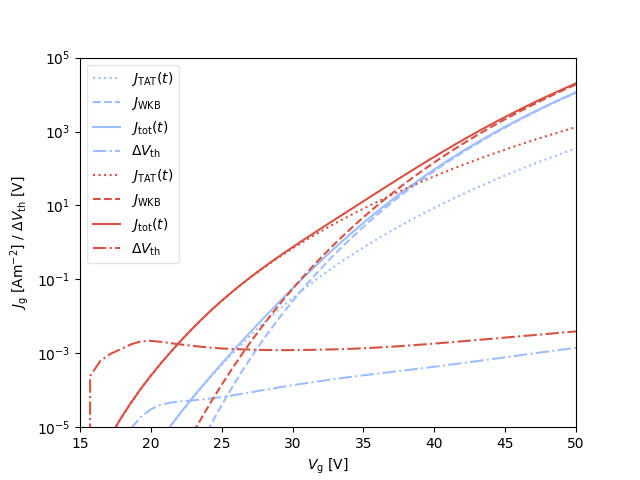Although several different models to describe TAT have been proposed in the literature, it is usually treated separately from charge trapping in the context of BTI. To unify the description of TAT and BTI, Comphy implements a novel approach, in which both phenomena are described on the basis of the NMP model. In contrast to previous approaches, this unified description enables the simulation of TAT and BTI with a reduced and consistent defect parameter set.
Fig. 1 shows a schematic of this new approach. The band-to-band tunneling mechanisms (blue) are modeled in Comphy using the well-known Tsu-Esaki model and the Wentzel-Kramer-Brillouin (WKB) approximation, while all trap-assisted tunneling processes (green and black) are described by two-state NMP transitions:

| |
|
| |
|
SiO2_TAT_trap_band = TrapBand_2S_NMP_3D(
| |
|
| |
|
| |
|
| |
|
| |
|
| |
|
| |
|
| |
|
| |
|
| |
|
| |
|
| |
|
| |
|
| |
|
my_device.trap_bands[
dVth, band, J_TAT = my_device.apply_gate_voltage(
